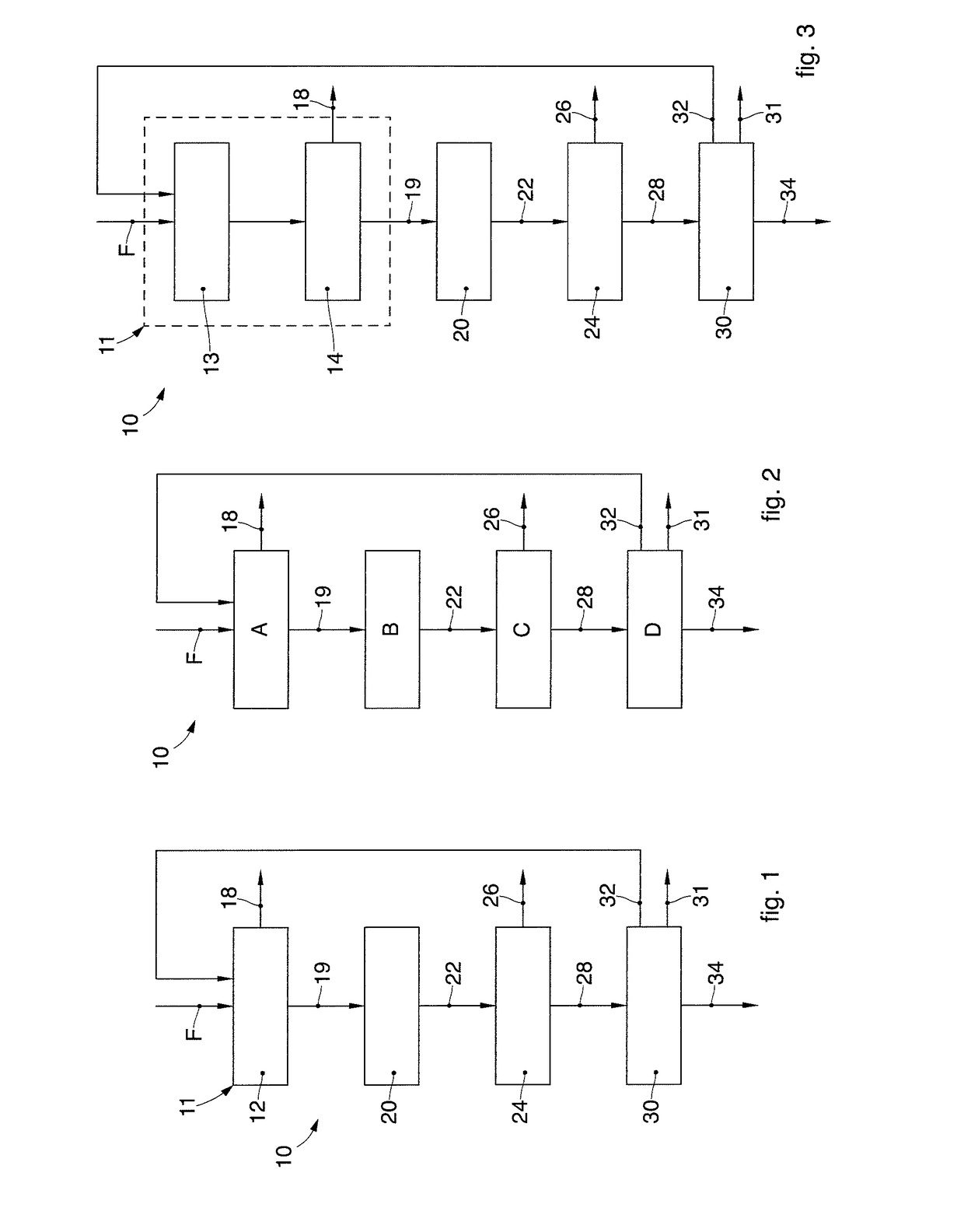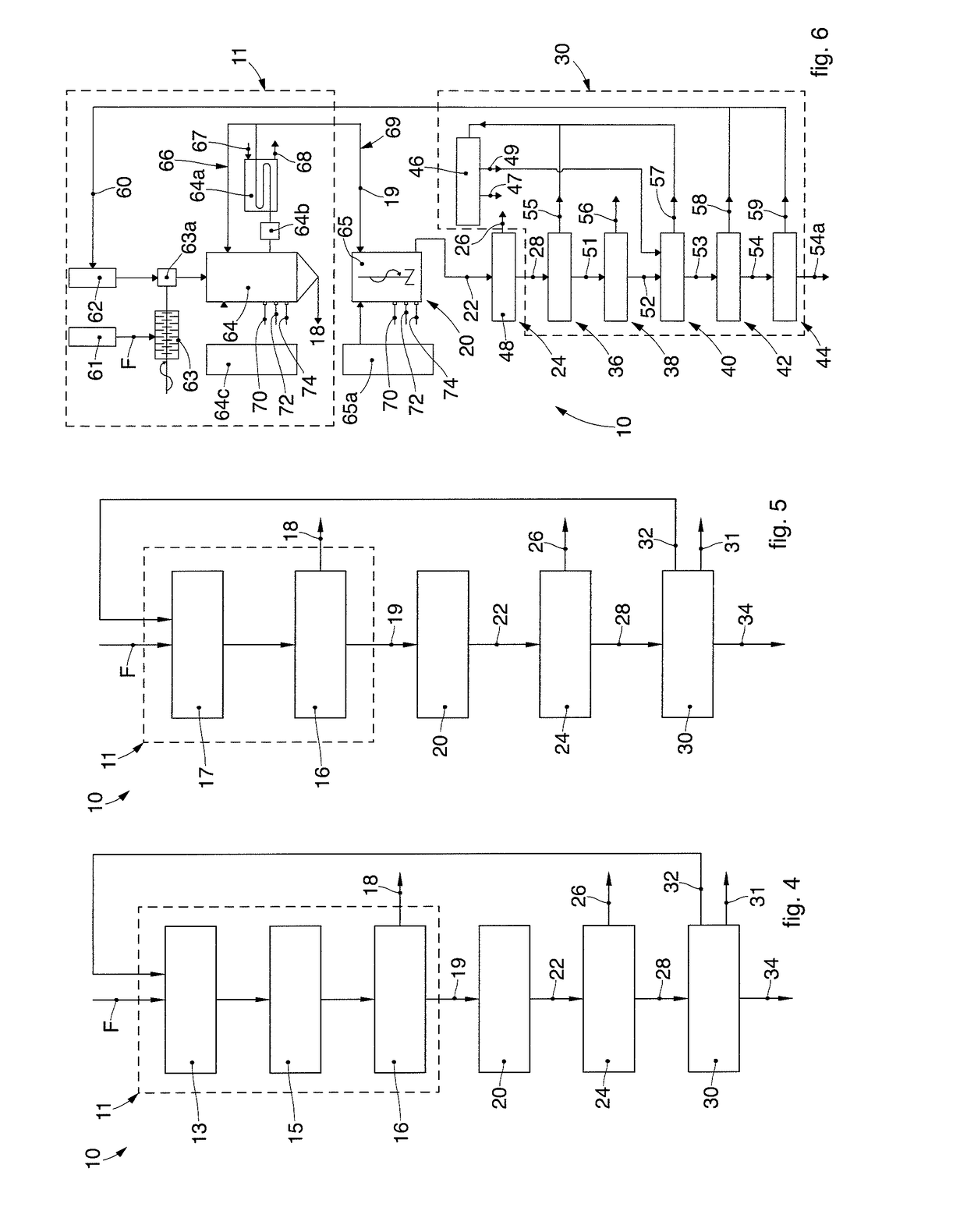At present the problem of disposing of poultry manure is a worldwide problem, if one considers the increased production of chicken meat and hence the consequent increase of said excreta, not only in Europe and America, but also in Asia.
The activity of
nitrifying bacteria causes the
ammonia salts to be transformed into nitrates which, being more soluble in water, can contaminate the water tables under the ground where the
effluent is poured, and can even cause
eutrophication in lakes and seas.
The
ammonia released into water environments then becomes toxic for the fish, given that it leads to a reduction in the
oxygen dissolved in the water.
In general, one big problem of poultry manure is the
high nitrogen content.
In fact, of all the excreta produced by breeding animals, poultry manure is the one that is richest in
nitrogen and this, especially in
anaerobic digestion, makes it impossible to use, both alone and in high quantities, unless it is compensated by co-
digestion with substances that are very rich in carbon.
Most of the nitrogen present in the poultry manure is in organic form (
uric acid,
urea, undigested proteins) but, during anaerobic
digestion, the basic pH (7.5-8.0) and the high temperatures (40-55° C.) encourage the transformation thereof into
ammoniacal nitrogen, which is highly toxic for
methanogen bacteria.
Another problem is the presence of
inert substances in the poultry manure, mostly small stones containing
calcium or fragments of shells used to help
digestion, and feathers.
Indeed, as they precipitate, these
inert materials create deposits in the anaerobic digestion reactors, which then have to be cleaned and emptied quite often, entailing a loss in production of
methane due to the time dedicated to emptying operations.
On the contrary, feathers tend to deposit on the blades of the mixers or to remain suspended on the
digestate, preventing the normal exit of the
biogas, with very negative results.
Another problem is that poultry manure has a very high bacterial load, mainly consisting of
Salmonella spp,
Escherichia Coli, fecal coliforms,
Listeria Monocytogenes, which could cause problems to the health of humans and animals and therefore it is necessary to reduce these pathogens.
One
disadvantage of this known treatment is the long duration of the extraction time, which especially entails the loss of organic substance
usable for producing
biogas.
Another
disadvantage is that the extraction process is not carried out at a constant temperature, but is connected to the seasonal variations in temperature.
Moreover, this process does not take into account the utility of the residual material of the extraction, that is, the nitrogen-poor material.
The known
treatment system uses enormous quantities of water, and no
system is provided to recover it for future re-use.
Moreover, during the
nitrification process, care must be taken to convert most of the
ammonia into
nitrate and not into
nitrite, which can cause problems to the environment.
The biomasses are present in the reactors in the form of
biofilm, and one danger encountered in this process is that during the transfer of liquid from one reactor to the other there can be a partial run-off of the bacterial masses.
This process cannot be applied for the purposes of anaerobic digestion of the
solid fraction because if the solid-liquid separation occurs by acidification, there is no transformation of the nitrogen (organic and inorganic) into ammonia, which remains mainly in the solid.
The disadvantage of this process is the reintroduction into circulation of a liquid containing a percentage of nitrogen, remaining after stripping, and hence a progressive accumulation of nitrogen in the
digestate.
The disadvantage of this known method is that, since it does not give
dilution to the
mass of effluent, a large quantity of alkaline agent is needed to be added in order to raise the pH; moreover, this stripping method requires a lot of energy to make it function.
One of the disadvantages of this process is that, although it leads to an increase in the
biogas yield of about 25%, the loss of organic substance remains at around 20%.
The disadvantages of this process described in U.S. Pat. No. 8,637,304 are connected to the use of photo-bioreactors for growing the microorganisms which feed on carbon.
In fact, apart from being an expensive method, it is also delicate: the growth of microorganisms such as
cyanobacteria requires that some parameters must be kept constant, such as temperature, pH, absence of pathogens, concentration of the microorganisms themselves, and
turbidity of the
growth medium.
Furthermore, since high concentrations of ammonia are toxic for the microorganisms to be replicated, treatment with the photo-reactor can be applied only to digestates or leachates, and not to excreta as such.
Another limitation of the system described in U.S. Pat. No. 8,637,304 is the removal of carbon.
The process cannot therefore be applied to excreta destined for anaerobic digestion, because carbon useful for the production of biogas is removed.
Another problem of this technology is “pore
wetting”.
The greatest challenge for the application of membrane-type contactors on an
industrial scale is to obtain continuity in the operation.
 Login to View More
Login to View More  Login to View More
Login to View More 


